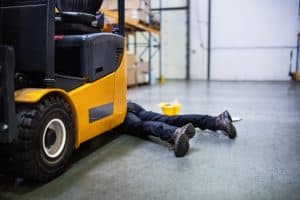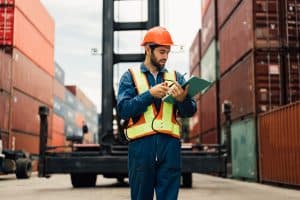Australian Warehouse Safety
In 2022, 160 Australians lost their lives as a result of work-related accidents, the majority of these coming as the result of vehicle-related collisions (car, truck, tractor etc.) Then there is the additional cost of non-fatal accidents, with over 130,000 serious accident claims lodged, averaging 7 weeks in time lost per claim. (Safe Work Australia)
 A typical Australian warehouse environment presents risks like these to its’ workforce every day, with heavy mobile machinery like pickers, pallet loaders and forklifts regularly operating in the same space as workers. The most common safety hazards in Australian warehouses are:
A typical Australian warehouse environment presents risks like these to its’ workforce every day, with heavy mobile machinery like pickers, pallet loaders and forklifts regularly operating in the same space as workers. The most common safety hazards in Australian warehouses are:
* Forklift/ heavy vehicle related incidents (collisions, tipping etc.)
* Blind spots, obstacles and poor visibility
* Slips, trips and falls
* Crushing (from stationary machinery or vehicles)
* Strain from manual labour
* Falling objects
* Fire
* Exposure to harmful substances
* Ignoring of safety protocols by staff
Clearly, the safe movement of goods and storage of products has to be the #1 priority for the team in any warehouse environment. Additional safety training or extra safety procedures can help to reduce risk, but the actual success of these still depends upon staff awareness of the procedures and following them on a daily basis.
Load-shifting equipment (powered mobile plant such as forklifts, pickers or pallet jacks) all present real safety risks to pedestrians such as:
* Collisions with pedestrians and/ or loads falling onto them
* Rollovers or equipment moving unexpectedly, causing a crushing risk
* Vehicles being unable to stop quickly
* Compromised visibility when loaded
Considering the danger these hazards pose to staff every day, are these risks you can afford any longer?
How Warehouse Safety Officers Mitigate Risk

The most common response to these risk factors is to take the warehouse layout into account and put physical barriers in place, separating pedestrians from vehicles, plus introducing control measures such as:
* Minimising the cross flow of traffic, intersections and eliminating blind spots.
* Clearly defining and positioning parking areas so they can be accessed without crossing driveways or loading dock vehicle paths.
* Clearly marking pedestrian walkways or using temporary physical barriers to separate pedestrians from roadways and powered mobile plant operating areas where pedestrians and vehicles often interact based on speed limits, stopping distances and efficient workflow.
* Defining areas where powered mobile plant is used as ‘pedestrian exclusion zones’ and excluding powered mobile plant from pedestrian walkways and work areas.
* Using line markings and marker posts in docking areas to indicate distances from the dock.
However, introducing these changes to the warehouse still may not be enough…
Warehouse Safety Risk: The Human Factor

Initiatives such as line markings, barriers and verbal/ written notices to stay a certain distance clear of vehicles are only effective so long as your staff and visitors understand these directions and stick to them. Yet human error and negligence are always a factor, on top of the legal obligations to uphold worker safety.
With risks like these ever-present, could your warehouse use a BodyGuard?
